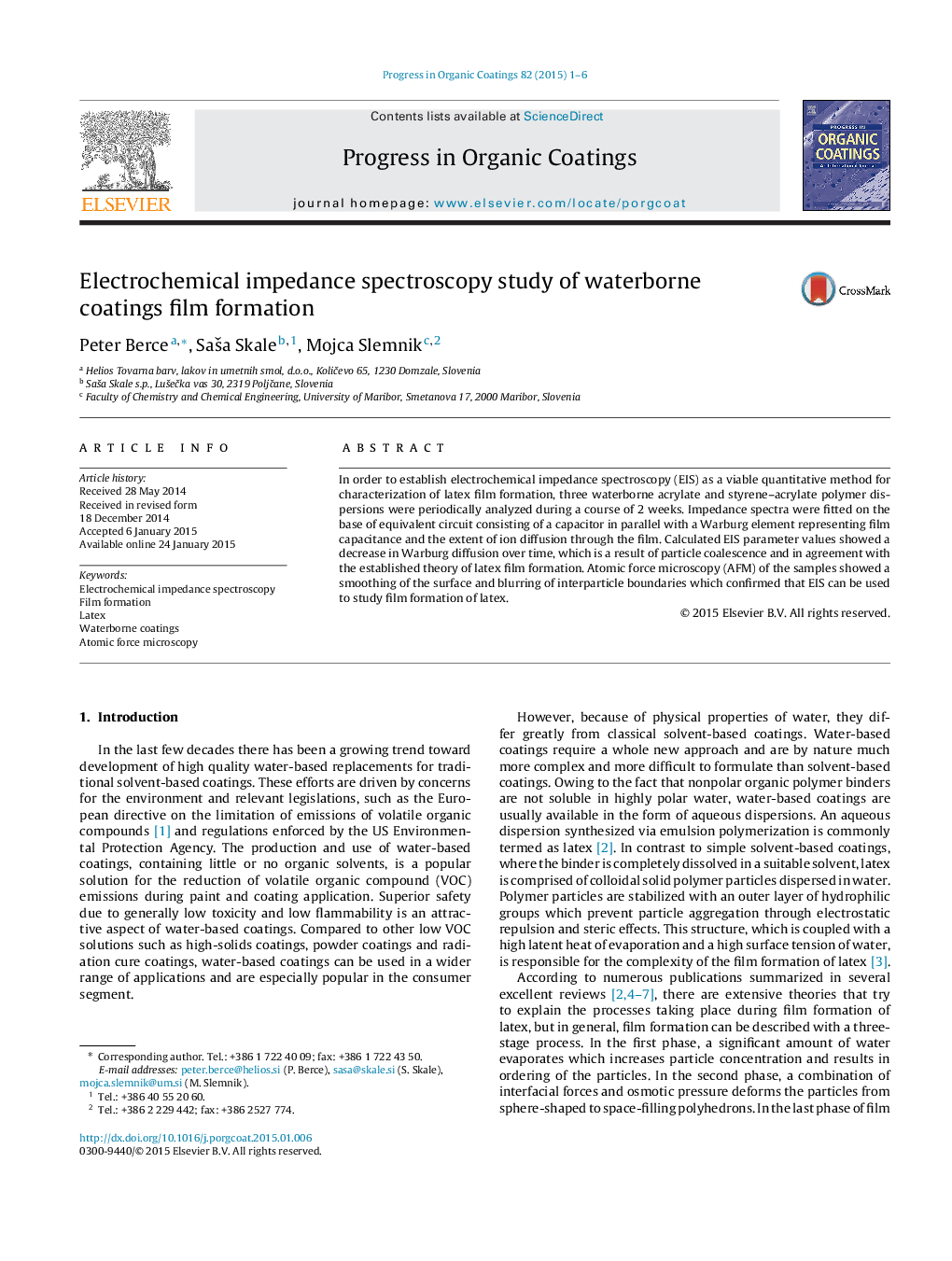| Article ID | Journal | Published Year | Pages | File Type |
|---|---|---|---|---|
| 692422 | Progress in Organic Coatings | 2015 | 6 Pages |
•EIS was used to study film formation of three waterborne latex coatings.•Impedance of the coatings increased during film formation.•Warburg impedance was used to quantify particle deformation and coalescence.•AFM imaging showing particle deformation and coalescence confirmed EIS results.•EIS was shown to be suitable for studying latex film formation.
In order to establish electrochemical impedance spectroscopy (EIS) as a viable quantitative method for characterization of latex film formation, three waterborne acrylate and styrene–acrylate polymer dispersions were periodically analyzed during a course of 2 weeks. Impedance spectra were fitted on the base of equivalent circuit consisting of a capacitor in parallel with a Warburg element representing film capacitance and the extent of ion diffusion through the film. Calculated EIS parameter values showed a decrease in Warburg diffusion over time, which is a result of particle coalescence and in agreement with the established theory of latex film formation. Atomic force microscopy (AFM) of the samples showed a smoothing of the surface and blurring of interparticle boundaries which confirmed that EIS can be used to study film formation of latex.
